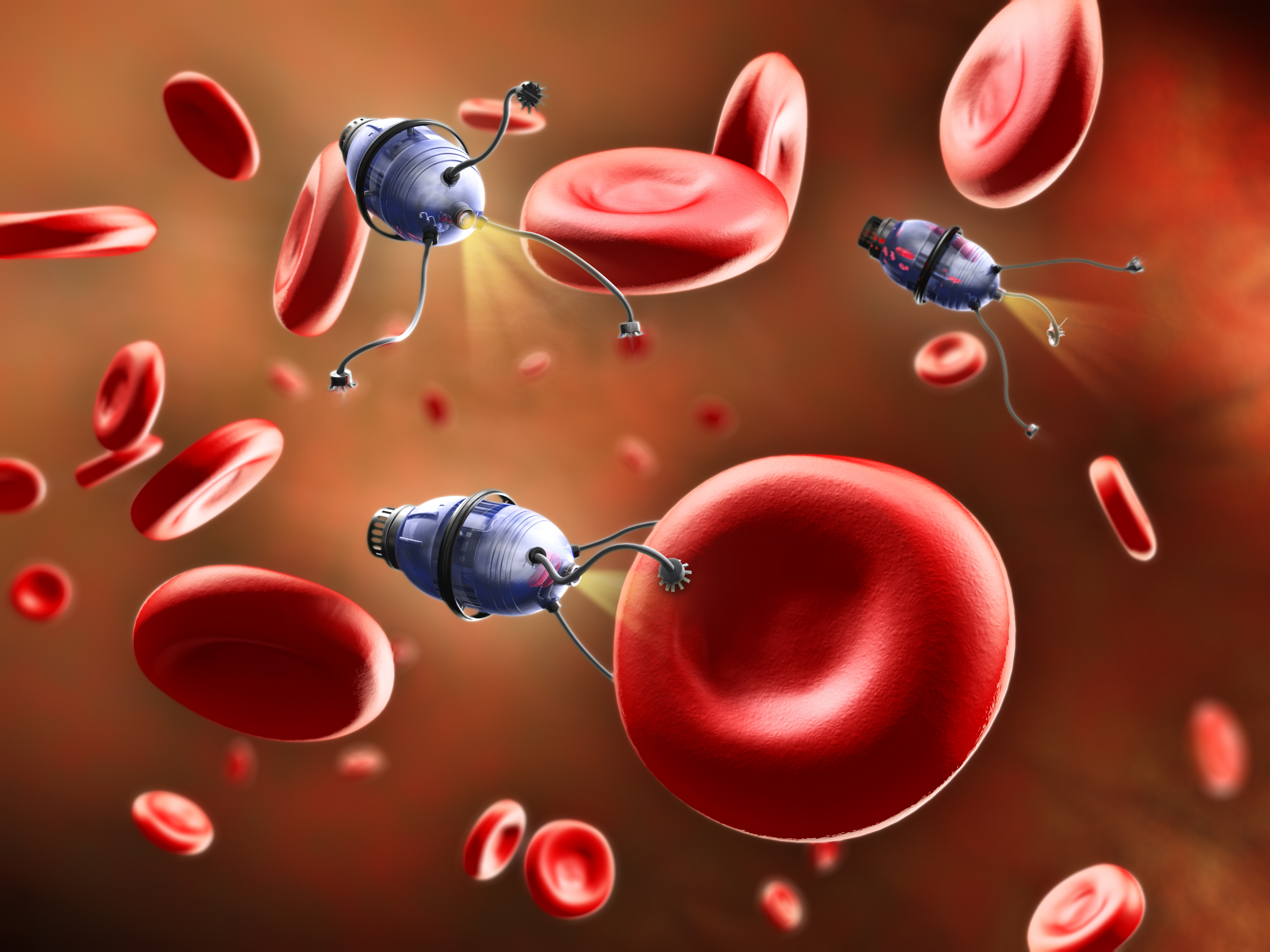"It has become appallingly obvious that our technology has exceeded our humanity." -Albert Einstein
Technology is constantly evolving. For better or for worse, technology has moved forward faster than anything in history. With new devices coming out every few years and our human needs craving for bigger and better things, it make me wonder if technology has moved on in all aspects of life. For example, say the medical field. The medical field is one of the oldest fields in history and having something so new like technology can pose a problem especially when it comes to human life.
The rapid growth of technology has given many fields a chance to grow. However, the medical field has no really embraced its techy roots. Humans are skeptical when it comes to machines for fear that it can be used for the wrong reasons or that the machines lack a conscious. Regardless, it has not stopped developers and programmers from trying. Nano technology is the future and according to some scientists, it has potential to change the medical field forever.
##History
Nanotechnology is the science and application of creating objects on a level smaller than 100 nanometers (nanobot.info). The technology in general touches many aspects of science. However, with its many uses it brings into question "what is life?" or what is considered "too far" when it comes to human life. With recent advances in nanotechnology, it becomes difficult for one to distinguish the difference between what is right and what is wrong. For example, with nanotechnology, it is possible to emulate certain bodily functions (like an artificial pancreas that can deliver insulin in diabetes patients). At the same time, it can be used for very wrong purposes like involuntary euthanasia.
The use of invisible machinery has been around since the 1950s, a subject that was talked about by Nobel Prize winning physicist Richard Feynman in 1959. The use of machinery inside the human body was not introduced until 2010, where nanobots were injected into the bloodstream.
##Common Questions
What are Nanobots?
Nanobots are small robots that appear invisible to the naked eye. Nanobots run on a different kind of coding compared to computer programming.

Nanobots can have many uses. For example, it can be used for security, health, and gadgets. In this paper I will be focusing on the uses of nanotechnology from a medical stand point. Nanobots have recently seen an increase in uses according to many sources. In the medical field it is not uncommon now for doctors to use nanobots for simple tasks such as taking blood pressure or checking glucose levels in diabetes patients. However, in recent news, Nano robotics has come to be used in more intense cases like removing cancer cells and removing brain tumors.
##Medical Uses:
For fifteen years, nanotechnology has made its way into the medical field. Over the years it has been found to be useful in many situations as well as uses. For example, nanobots have recently injected into the human brain silently acting as artificial organs or acting as neurotransmitters. As years go by the use of technology in medicine becomes more needed.
##Dangers of Nanobots: As with everything in the world, there are two sides to a coin. In this case the “good” side and the “bad” side. Many people have become afraid of the advances in Nano robotics. So much in fact, that people sometimes refuse medical attention. For many nanobots are considered “evil” because it involves injecting something non-organic into a person. The fear is understandable. However, everything comes with a price the only thing you have to do is be willing to pay that price.
The people who fear nanotechnology feel that it can be easily tampered with. For example, if I person were to inject nanobots into their blood stream for insulin; what ensures that they are receiving the correct amount? What is making sure that someone at the hospital does not tamper with the dosage? In today’s world people fear what they cannot control. To many people the coding involved with Nano robotics can have a catastrophic consequence hence why people refuse advanced treatment.
##Code:
Servo myservo;
int pos = 0;
void setup()
{
myservo.attach(9);
}
void loop()
{
for(pos = 0; pos < 180; pos += 1)
{
myservo.write(pos);
delay(15);
}
for(pos = 180; pos>=1; pos-=1)
{
myservo.write(pos
delay(15);
}
}
##References: http://recode.net/2014/05/04/self-assembly-required-one-scientists-bid-to-build-cancer-killing-nanorobots/ https://www.radcliffe.harvard.edu/exploratory-seminars/programmable-molecular-robots-and-nanobots http://www.futurenanotechnology.net/ http://www.nanorobothistory.org/ http://www.robotshop.com/blog/en/how-to-make-a-robot-lesson-10-programming-your-robot-2-3627


Where can i find the full article, and coding refernce.And basic tutorial on nanobot coding